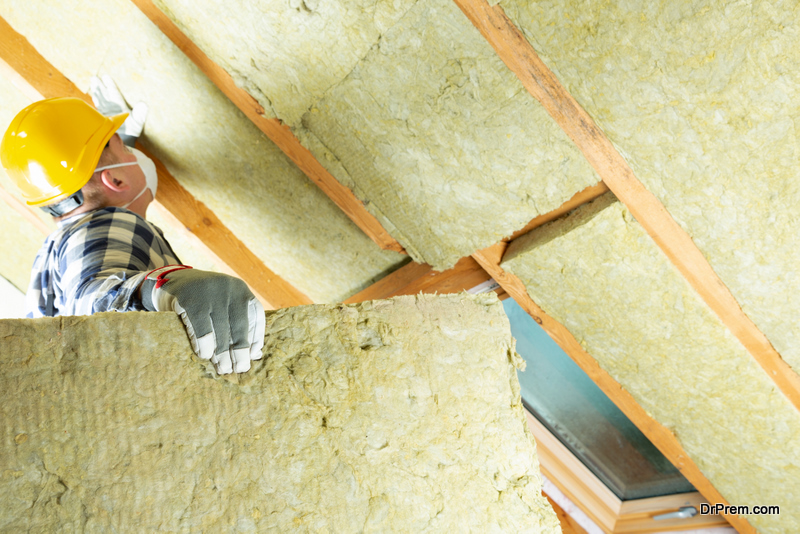You’re just one person on a planet inhabited by billions of people. Therefore, you have very little power to impact climate change on your own, right? Think again. Every individual has the power to move the climate change needle, even if it’s only slightly. Your efforts may be augmented when others see your responsible example and decide to follow your lead.
It’s easy to become overwhelmed when considering the countless ways you could live more sustainably. But you’re more likely to give up if you feel the task at hand is too monumental. Therefore, it’s best to start with small, achievable goals rather than attempting to overhaul your entire lifestyle at once. Here are five practical ways consumers like you can have a positive impact on climate change.
1. Invest in Solar Panels
Solar energy continues to rise in popularity as more homeowners realize the advantages of this clean, renewable energy source. It also helps that solar installation is more affordable than it used to be, making it easier for the average household to afford it. It’s now possible to lease solar panels instead of paying for them upfront, which further reduces costs to consumers. If solar panels were too expensive for you in years past, it’s worth looking into them again.
Solar panels can improve air quality and reduce greenhouse gas emissions. Switching to solar energy allows you to play an important role in mitigating climate change. The National Renewable Energy Laboratory states that using solar panels to produce approximately 1,000 kWh of electricity reduces carbon dioxide emissions by more than 1,400 pounds. According to the U.S. Energy Information Administration, the average house uses around 11,000 kWh of electricity annually. Therefore, when you switch to solar energy, your household can reduce carbon dioxide emissions by tens of thousands of pounds.
2. Use Less Plastic
The first man-made plastic was publicly demonstrated by Alexander Parkes in 1862. It was a crude sort of plastic made from a cellulose-derived organic material. The first fully synthetic version of plastic didn’t come along until Belgian chemist Leo Baekeland developed it in 1907. It was made from phenol and formaldehyde blended together. Since then, plastics have taken the consumer world by storm.
The plastic industry creates a staggering 232 million tons of planet-warming emissions annually, according to Bennington College’s Beyond Plastics project. But the climate change impact doesn’t end once the plastic products are created. At the end of their lifespan, many non-recyclable plastic products end up in landfills while others are burned for energy. Unfortunately, the energy from plastic incineration is not clean and produces toxic chemicals that are bad for the environment. To avoid contributing to this climate-harming industry, purchase fewer plastic products and those packaged in plastic.
3. Improve Your Home’s Insulation
Though it seems like an inconsequential thing, the type and amount of insulation in your house can impact climate change. Most older homes have less insolation than newer homes. If you live in a house that was built over 20 years ago, you may want to consider adding more. A well-insulated home uses less energy because its HVAC system doesn’t have to work as hard to keep it heated or cooled.
There are many different insulation materials you can choose from. Some of the most eco-friendly options include those made from cellulose, recycled plastic bottles, and eco-friendly cork. However, you’ll need to make sure the insulation you choose has a good thermal resistance (R-value) for your area. Refer to the Department of Energy’s R-value recommendations to help you select the right insulation for your climate.
4. Limit Your Travels
Research shows that global air travel has a big impact on the planet. A joint study by European, Asian, and U.S. researchers found that the aviation industry accounts for 3.5% of all climate change drivers. Airplanes rely on fossil fuels, and their CO2 emissions remain in the atmosphere for decades. The problem is likely to worsen, as the United Nations predicts carbon dioxide emissions from air travel will triple by 2050.
Fortunately, consumers can turn things around by choosing to travel by air less frequently. If everyone chose to limit their air travel, airline companies would burn less fuel and thus decrease their emissions. If you are required to fly, you might consider offsetting the negative impact on the environment with positive action. For example, you could donate money to tree-planting organizations such as Trees for the Future or the International Tree Foundation. Trees mitigate climate change by absorbing carbon dioxide in the atmosphere.
5. Purchase Fewer Unnecessary Items
Limiting waste and purchasing only what you need is great for both the environment and your wallet. You may wonder what harm you cause by mindlessly buying frivolous things. The answer is fairly simple: The more unnecessary things you buy, the more unnecessary things companies will produce. The production of household services and goods is responsible for a huge portion of global greenhouse gas emissions.
The power to reverse this trend of production and waste lies in the hands of consumers. If the average person stops driving demand for unnecessary products, businesses will have to cut back production of those products. Instead of making wasteful purchases, challenge yourself to only buy what you need. Then, make good use of the products you buy and don’t replace them until it’s absolutely necessary.
It’s easy to feel like your actions don’t make a dent in the growing problem of climate change. But your example could influence others to make similar changes. Before you know it, your humble efforts could inspire social trends with real power to move the climate change needle.
Article Submitted By Community Writer




